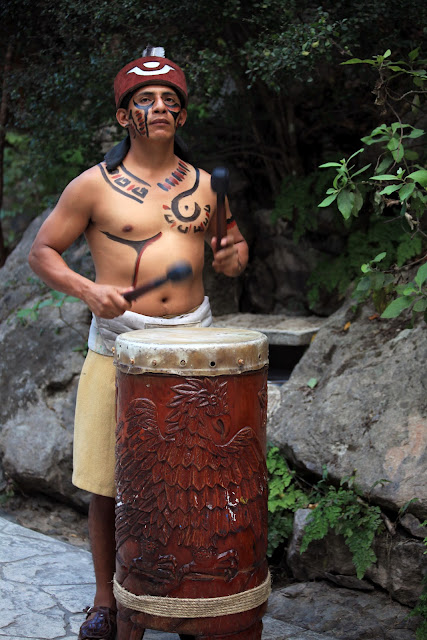raw shrimp with lime juice,
red onion, chili peppers,
avocado, mango
Dinner at a pizza restaurant with a band from Bolivia, who play three songs from Chile for our Chilean twins. Because we're in Mexico, I don't want to eat pizza. Ceviche, a regional Mexican dish, is on the menu, but I also don't want to get food poisoning from eating raw seafood. I ask Gabe if it's safe to order the ceviche camarón and he assures me that the shrimp is fresh.
Ceviche, popular along all the coasts in Central and South America, is raw fish or seafood marinated in citrus juice. My shrimp is marinated in lime juice, liberally spiced with chili peppers and red onions, and topped with avocado. I order fresh mango juice to tone down the hot spices. The combination is as beautiful to the eye as it is delicious to the taste.





















































